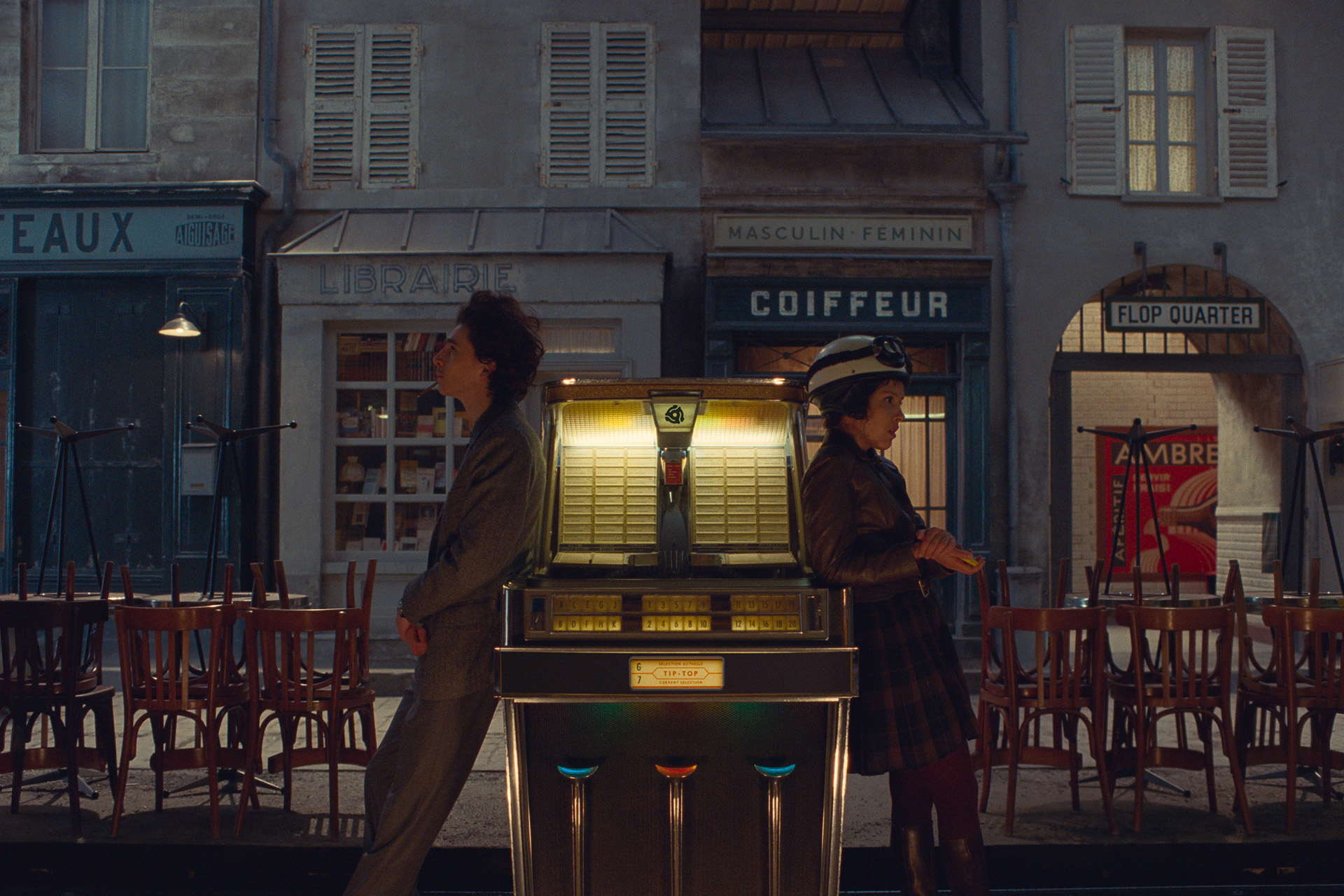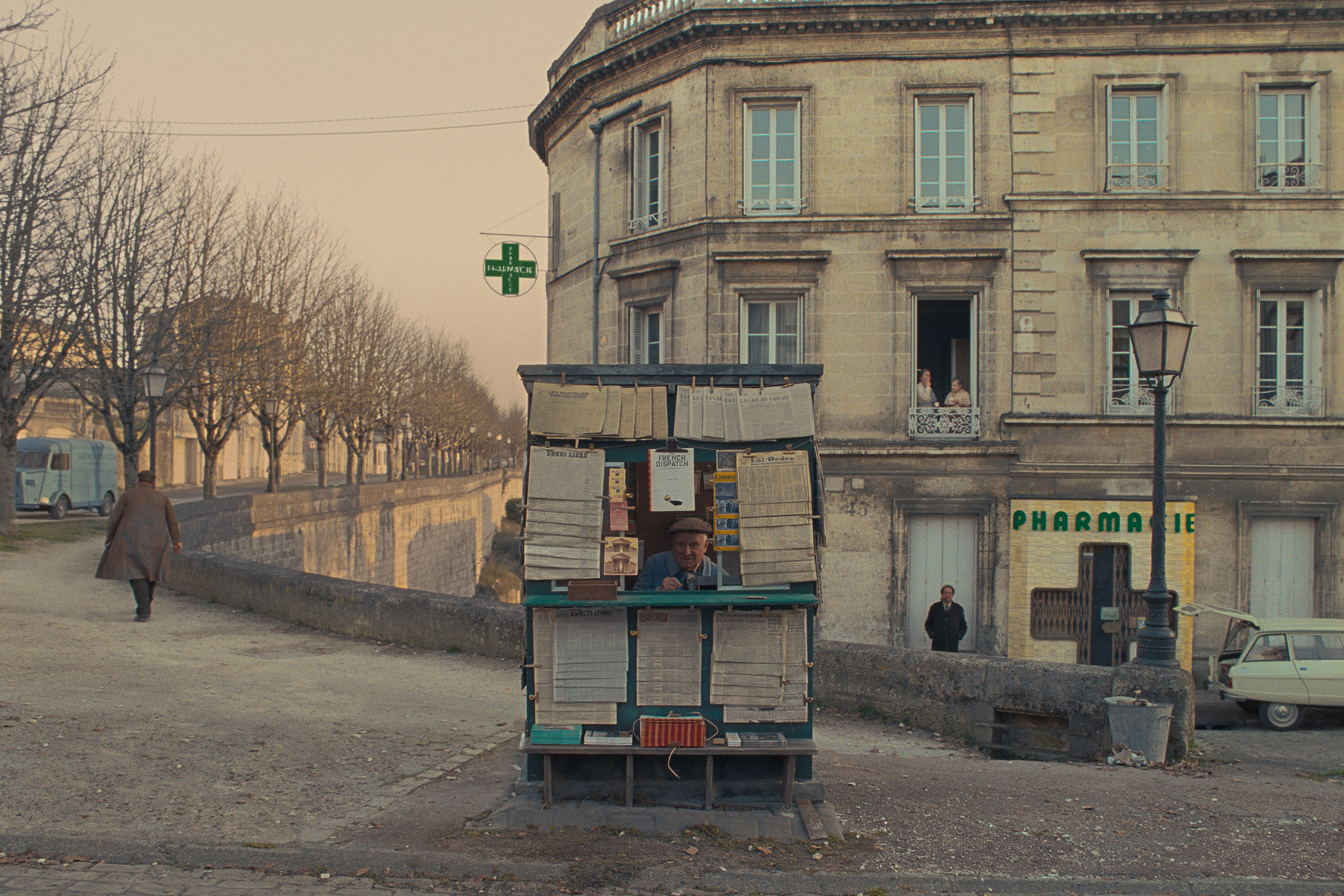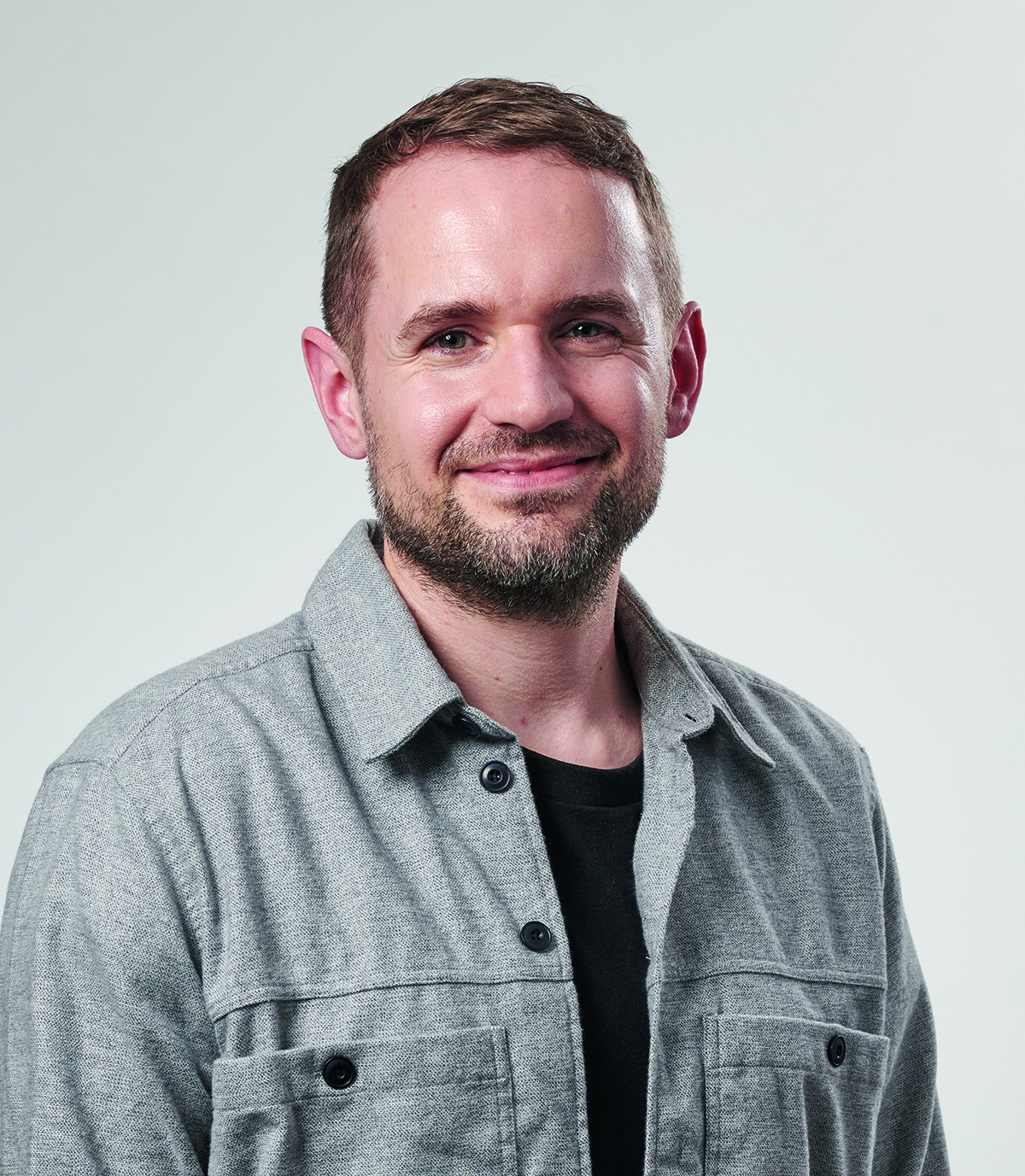How the world of Wes Anderson's The French Dispatch was created
Exclusive: Production designer Adam Stockhausen on crafting the look of Wes Anderson’s latest

Wes Anderson’s latest movie is one of his most ambitious and intricately designed yet: and considering he’s the director behind the The Grand Budapest Hotel, Moonrise Kingdom, and more, that’s really saying something.
The French Dispatch revolves around a publication in the vein of The New Yorker. Based in the fictional French city of Ennui-sur-Blasé (actually filmed in Angoulême), the magazine’s content is reflected in the three vignettes that make up the film: the story of an incarcerated painter (starring Benicio del Toro, Adrien Brody, and Léa Seydoux); a student revolution (starring Timothée Chalamet and Frances McDormand; and a tense crime mystery about a chef Nescaffier (Stephen Park) and a police Commissaire (Mathieu Almaric). We also meet the team behind the magazine in an overarching frame story.
Inside the new issue of Total Film magazine, you can read all about the film, via interviews with Anderson and his enviable ensemble, but ahead of that, here’s an exclusive Q&A with production designer Adam Stockhausen. The French Dispatch is the fifth Anderson film he has worked on, and he’s also underway on the director’s currently untitled next project.
Read on to find out more about how the film's gloriously stylized sets and locations came together.

What made you choose Angoulême as the city to set The French Dispatch in?
We looked at a bunch of different towns… what we really wanted was something that felt like the old photographs of Paris. Angoulême turned out to be the best choice I think because of its geography. It sits on a hilltop, so there are winding twisting roads in a spiral. This made for lots of great intersections —Y’s where one leg goes up and another down, roads that become stairs and then roads again, curving roads set one above another. Those features really made Angoulême feel a lot like our references (and therefore like Ennui-sur-Blasé) even if it’s not the most ‘Parisian’ of all towns at first glance.
What sort of research did you undertake of the 1950s/60s time-frame? Did Wes point you towards certain films?
Bringing all the latest movie news, features, and reviews to your inbox
Loads and loads of photographic research! The pre-Haussmann photographs of Charles Marville were especially useful. We also used a lot of films – everything from The Red Balloon and Mon Oncle to Irma La Douce.

Wes told Total Film you had twice as many sets as any other film you've made together... With that in mind, how ambitious did you feel this film was? What were the difficulties in recreating Wes' vision?
I think so! It’s because of the nature of the story - or rather the four stories. We see a complete world for each one of the stories within the movie, so that made for a lot of sets.
It was very ambitious… and a bit overwhelming. We dove in on the Sazerac [Owen Wilson] story and started with the look of the town and the exterior of The French Dispatch. It got quite difficult as we went along because the sets kept coming and the lead we’d built up during prep gradually disappeared. There were days where I wasn’t sure we’d have the next day’s shooting set ready!
In practical terms, were you re-dressing locations or was there any studio-based work?
Loads of both! Although in our case the studio was an abandoned felt factory!
It was a great setup where we had multiple locations being dressed and modified around town simultaneously, and the felt factory stages were just five minutes down the road. I’d make a constant loop visiting each of them. Wes was able to jump from one to the next as well. He’d come and check the line-up of upcoming shots in between things.
Of the three main stories in the film, which one did you love designing the most? And which was the trickiest?
There are elements in each that are very special to me. Certainly the Sazerac story was fun because the shots of Ennui-sur-Blasé are so carefully constructed and exactly detailed. I really enjoyed ‘The Concrete Masterpiece’ though because of the tableau still life paintings we did for the sequence where the painting travels the world, and for the frozen fight scene in the hobby room.
I’d say the Nescaffier story was probably the trickiest – mostly because there were some very complicated camera moves to be sorted out.

The French Dispatch opens in cinemas in the US and the UK on October 22. For much more on the film from Anderson and his cast, pick up a copy of the new issue of Total Film magazine, when it hits shelves this Thursday, September 16, featuring not one but FOUR Eternals covers to collect:

And if you’re a fan of Total Film, why not subscribe so that you never miss an issue? You’ll also get it before it’s in shops, and you’ll get exclusive subscriber-only covers like the Eternals one you can see below. With our current subscription offer at MagazinesDirect, you’ll get the magazine half price too, so what are you waiting for?


I'm the Editor at Total Film magazine, overseeing the running of the mag, and generally obsessing over all things Nolan, Kubrick and Pixar. Over the past decade I've worked in various roles for TF online and in print, including at GamesRadar+, and you can often hear me nattering on the Inside Total Film podcast. Bucket-list-ticking career highlights have included reporting from the set of Tenet and Avengers: Infinity War, as well as covering Comic-Con, TIFF and the Sundance Film Festival.


